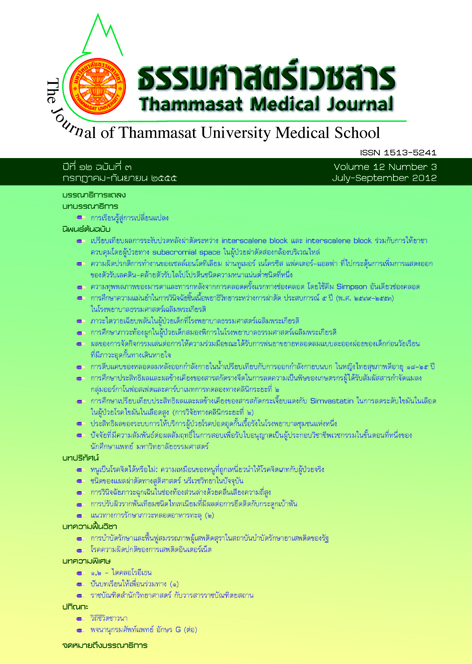Comparison of Exercise-Induced Bronchoconstriction after Water and Land-Based Exercise in Healthy Females Aged 18-25 Years
Keywords:
Exercise-induced bronchoconstriction, Water-based exercise, Land-based exerciseAbstract
Background: Exercise-induced bronchoconstriction (EIB) has a negative effect on the exercise performance. Therefore, the exercise programs that lead to less severity of EIB may have a better effect on exercise performance.
Objective: This study aimed to compare the severity of EIB as represented by the increase in airway resistance after exercise between land and water-based exercises.
Methods: Thirty healthy female subjects (18-25 years) were requested to perform two types of exercise on a separate day; 1) water-based exercise and 2) land-based exercise. The intensity of exercise was prescribed using the target heart rate range between 60-80% of individual heart rate reserve (HRR). Lung function including, forced expiratory volume in one second (FEV1), and forced expiratory fl ow at 25-75% of FVC (FEF25-75%) were measured before, and at the 1st, 4th, 7th, 10th, 20th, and 30th minute after each exercise session. The increase in airway resistance after exercise was calculated by using pair t-test in comparing the minimum value of lung function after exercise to that value before exercise and represented as percent maximum reduction of FEV1 and FEF25-75%.
Results: The percent maximum reduction of FEV1 after water-based exercise (6.9 ± 5.6%) was signifi cantly less than that after land-based exercise (10.6 ± 7.5%) P=0.03. On the other hand, percent maximum reduction of FEF25-75% after water-based exercise (6.0 ± 8.9%) and land-based exercise (5.6 ± 11.7%)were quite similar.
Conclusion: The severity of exercise-induced bronchoconstriction (EIB) was reduced after water-based exercise compared to land-based exercise. Moreover, change in FEV1 could represent the change in airway resistance after exercise more obvious than change in FEF25-75%.
Key words: Exercise-induced bronchoconstriction, Water-based exercise, Land-based exercise


